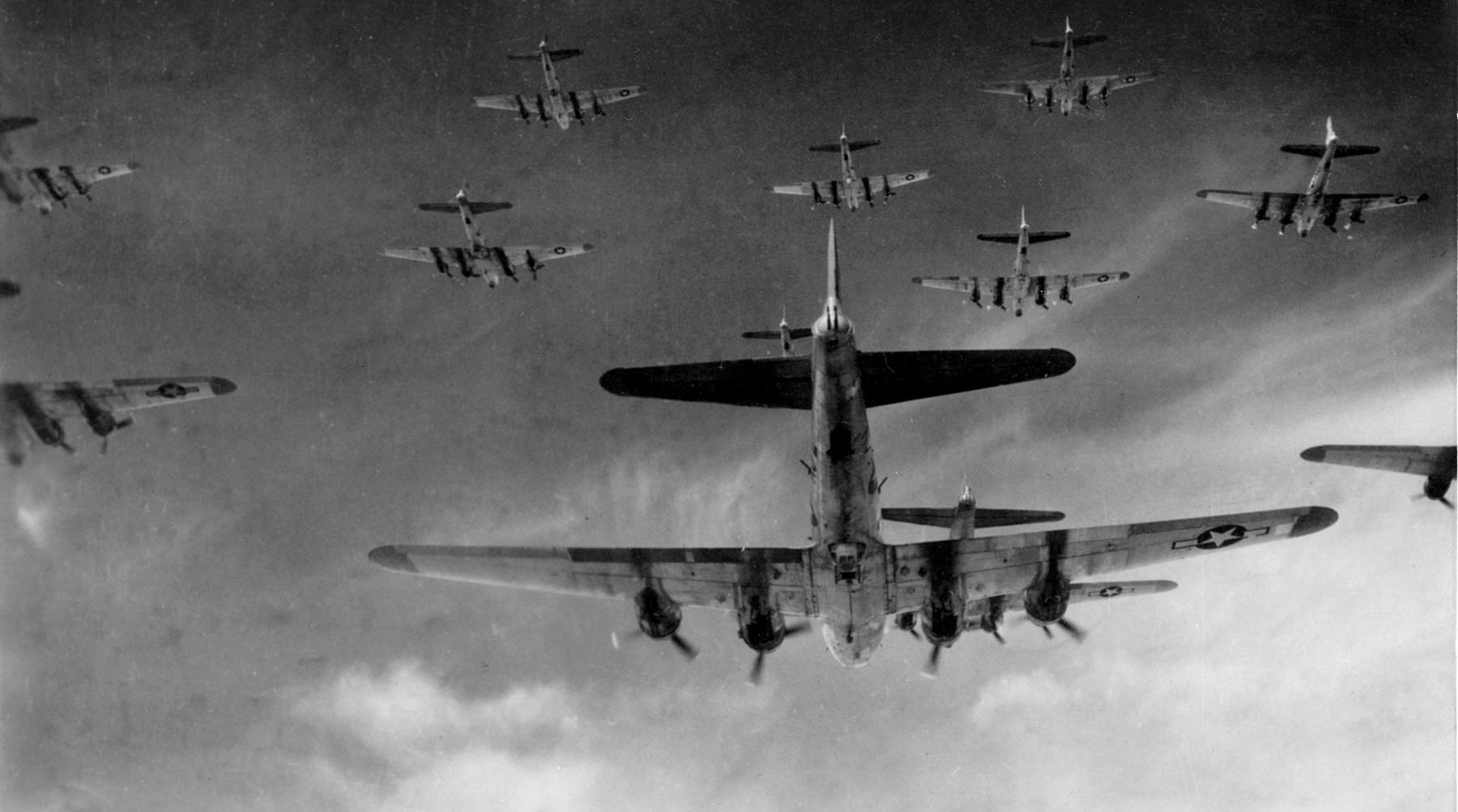December 24 in U.S. military history
1814: Delegates from the United States and Great Britain sign the Treaty of Ghent in modern-day Belgium, bringing an end to the War of 1812. News travels slowly, however, and two weeks after the signing, Maj. Gen. (and future president) Andrew Jackson defeats a British invasion force in the Battle New Orleans.
1943: 670 B-17s and B-24s from the Eighth Air Force conduct a bombing raid at German long-range rocket sites at Pas de Calais, France.
1944: After a week of foul weather that had kept American warplanes grounded during the Battle of the Bulge finally breaks, the Eighth Air Force takes advantage of the break in the clouds and restore their air supremacy. Nearly 3,000 heavy bombers and fighters take off from England for the largest strike mission of the war to provide troops on the ground the support they need to break the Germans.
Brig. Gen. Frederick W. Castle, commanding the 3rd Combat Bomb Wing, assigns himself as co-pilot of the lead bomber for this vital mission. While enroute, his B-17 develops engine problems causing it to drop out of formation. Since the bomber was over allied-controlled Belgium he decided not to jettison his bombs, which would help them regain speed and maneuverability, but risked the lives of those below. Castle’s hobbled bomber makes an easy target for Luftwaffe Bf-109 fighters, whose repeated attacks set the B-17 on fire and send it into a dive. Castle orders the men to bail out while he remains at the controls, and the plane explodes before he too can parachute safely. Castle’s sacrifice saves the lives of five of his nine crewmembers and Gen. Castle is posthumously awarded the Medal of Honor.
1950: An armada of ships and aircraft evacuate over 100,000 U.S. and South Korean troops, along with their equipment and 91,000 Korean refugees from the North Korean port of Hungnam, in what has become known by historians as the “greatest evacuation movement by sea in U.S. military history.”
1972: A North Vietnamese Mig-21 Fishbed fighter closes in on the B-52 Diamond Lil while the bombers approach their target of a railyard at Thai Nguyen. Tail gunner Airman First Class Albert E. Moore fires three bursts of fire from the B-52’s quad .50 cal machine guns, shooting down the MiG and scoring the last-ever tail gun kill – and saving his bomber crew. Today the Diamond Lil, with a red star painted on the rear of the plane commemorating Moore’s victory, guards the entrance to the Air Force Academy.
1979: The Soviet Union begins its invasion of neighboring Afghanistan. The United States will covertly aid the mujahideen in their fight against the Soviets, which will essentially suck the USSR into a quagmire much like the Vietnam War did for the Americans. The unsuccessful campaign lasts nine years, resulting in tens of thousands of Soviet casualties, hundreds of aircraft (thanks largely to U.S.-provided Stinger man-portable, surface-to-air missiles), and thousands of vehicles. Several million Afghans are killed, wounded, or displaced.

Today’s post is in honor of Lance Cpl. Kenneth A. Corzine, who on this day in 2010 died of wounds sustained in Afghanistan’s Helmand Province. The 23-year-old from Bethalto, Ill. was assigned to 3rd Battalion, 5th Marine Regiment, 1st Marine Division, I Marine Expeditionary Force.
